Zarathem is the largest organized religion in the world. It is predominantly practiced in Dah’Rem, however it has it’s roots, and places of worship in many nations. The beliefs of each denomination largely differ in their view of Uerties and the Uertian split, depending on these views, the beliefs of each denomination come from either 2 of, or all 3 of The Books.
History
The history of the Zarathem is quite incomplete. The religion itself is thought to have been built out of the culmination of several religions that have been brought together and unified. The Books in particular seem to have come from various regions with influences from places as far as Arzentia. In some cases through violence both from and to followers of Zarathem, as well as in many cases documents being censored, or outright destroyed. However, Zarathem as we currently see it today began with Uerties, and his efforts to try to unify the faith. He is one of the central points that can be used to coordinate the timeline of the faith.
There were many wars in pre-Kliever Dah’Rem, and during many of those wars various important artifacts, and religious texts were lost. The version of Zarathem we have now is a culmination of the most important texts we still have, and the ideas that have best survived the years since their creation.
Uertian split
Uerties is one of the most controversial figures in the faith. He was considered a prophet that worked to create the versions of the three books we see today by unifying many existing texts, and writing The Uertes. However many figures at the time saw him as a false prophet who was looking to capitalize on the position of prominence he had being a son of one of the local rulers of several cities near Av’Brak. This split eventually lead to a civil war within the many different denominations, and with other religious groups (like the Aeytr), eventually stabilizing to the 3 main denominations we see today. However, during this time there were many attacks, and retaliations from groups that would burn religious artifacts and writings. This makes the history of most of Dah’Rem particularly challenging to ascertain.
The Age of Dah’Rem
Following the Uertian split, the Av’Brak sought to control as much land as they could. Uerties had already worked out peace treaties with the Sal’em, Tyreth, and Aeytr. However any land that was not explicitly claimed by those groups was ruthlessly colonized. After Uerties death, his successor (and son) Dah’Rem became “The first Dynar”, and sought to capture as much land as possible. Modern day Dah’Rem is actually smaller than his original kingdom, and the result of various treaties, deals, and invasions done after his death. His excursion and colonization into other lands was one of the most successful expansions of territory any nation has seen. The expansion was spurred on with a mix of nationalistic, and religious zeal. Much of the propaganda used at the time for the nation was religious in nature and helped solidify his position as a political and spiritual laeder.
Notable Deities & Creatures
Zarathem does not have a simple hierarchy for it’s deities beyond assuming those created first were more powerful than those created later. So Tajan is the most powerful, then the sculptors, Jaerian and Taelrion, then the other deities after. There does seem to be precedence for this, but there is no confirmation in any of the books about which deities are “stronger” than one another and some countervailing evidence such as some gods killing off sculptors:
- Tajan: The creator of our universe, not particularly involved after creating the world
- Jaerian: A diety above other gods. A creature that worshipped Tajan and his creation. Frequently fought with Yelrion and would consume the world as the sculptors made it, refusing to let anything but Tajans perfection exist
- Yaelrion: A diety above other gods. Created by Tajan to protect the work of the scultpros from Jaerian, many consider it to be a God of passion, creativity, and love
- The sculptors: A group of deities that built the earth, nature, and the other gods (besides Jaerian and Yaelrion). It is possible for sculptors to die, at which point the sculptor is taken to mount At’Rius to be reformed into a new sculptor
- Cueile: The first “person” born. The goddess of fertility
- Tratheaous: The god of knowledge, was very inquisitive to a fault
- Uilerate: God of warfare that was destroyed attempting to kill Jaerian while he recovered from the fight during durmec
- Zarath: A prophet who discovered he is a sculptor that worked to reunify all of the reborn sculptors back together. The primary topic of The Rathem
The Books
Zarathem has several cannon books that are used to describe the faith, and their beliefs. The books themselves are largely constructions from various sources, and it’s speculated are the culmination of the teachings of several older faiths combined together with original teachings. The books come from anonymous authors (and likely more than one per book), except The Uertes which comes from the prophet Uerties. The three texts roughly make up the creation myth (The Quereth), various parables and life teachings (The Rathem), and the afterlife beliefs (The Uertes), though the books themselves are often contradictory in their teachings about these topics.
*Translations are largely provided by Ci’ran Bal’main
The Quereth
The Quereth is the first text chronologically established in the Zarathem faith. It has various sections in it, but primarily it’s known for containing the creation story. It’s been suggested in modern times that large portions of the book actually came from The Azure Flames, based on the similarities of both. It’s also been speculated that the books themselves were heavily influenced by both Uerties and his son Dahrem.
Creation Story
The original text of the creation story is relatively short, and devoid of as much detail as some of the other arguably less relevant sections of the book. The original language includes many rhyming verses, however this translation does not try to maintain this pattern. The story is split into 3 parts traditionally, the first is the creation of the world:
In the end there was nothing, and from the nothing the world was filled by his hands1
Heat, hotter than any since known prepared the world to be formed
Upon the tapestry of creation, Tajan began his great work
Stars placed gently above our heads,
Earth, born of his craftsmanship, and care
The second part of the story is more focused on the earth:
In his wisdom he knew his plans were too grand for us,
So he formed the sculptors, tasked to fill the earth with their creations
Five to build what we know and see, land, nature and sea2
Before his departure he grew weary of their craftsmanship, unsure of their devotion
So to he created Jaerian and Yaelrion, forces to balance creation and destruction
Jaerian who’s hatred3 burned hotter than the sun, to scorch the land and cleanse it of creation
Yaelrion to stand firm, who’s jaws and cunning would fight Jaerian back before the work is done
So the challenge begun, to form, fight, and rebuild what was made
Harmony and beauty for millennia to come
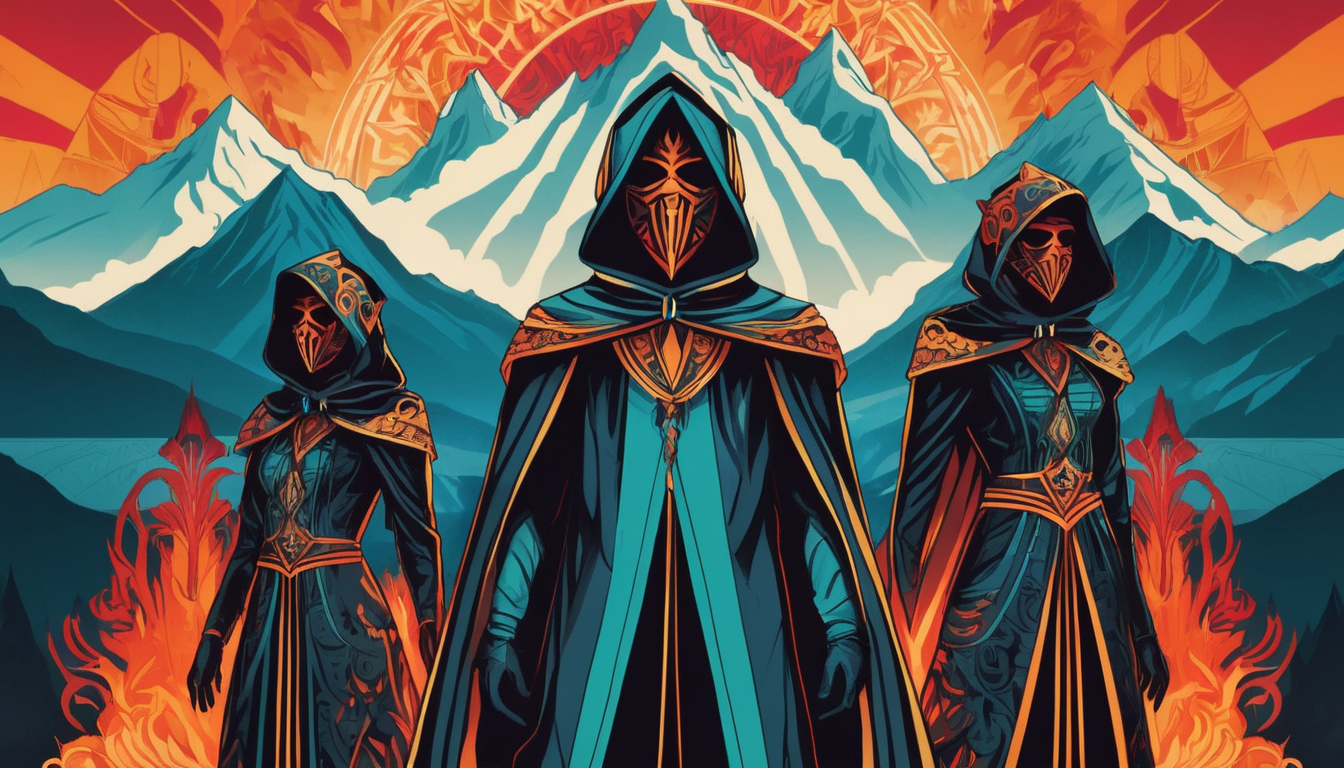 *A painting of some of the sculptors
*A painting of some of the sculptors
The final portion of the story is where life is introduced, and a prophecy of the end-times:
Reein, the most curious of sculptors had a dangerous thought
To be as Tajan, and create life as herself
She tried and failed, until one day she stood Cueile was born
Of life she is the queen, and of all people, she is the mother4
From this the sculptors birthed the gods, charging them with their burdens
From Cueile came the humans, to be ruled over by the Gods
From the sculptors came the animals, to be subjugated by the humans5
With this discovery Jaerian entered a rage, the sculptors had broken the balance
In his rage he razed the earth, scorching half the planet in a single night, durmec6
Matching his ferocity Yaelrion came to fight Jaerian back
None succeeded, and both fled, to return at the end for their final fight7
Images of Durmec
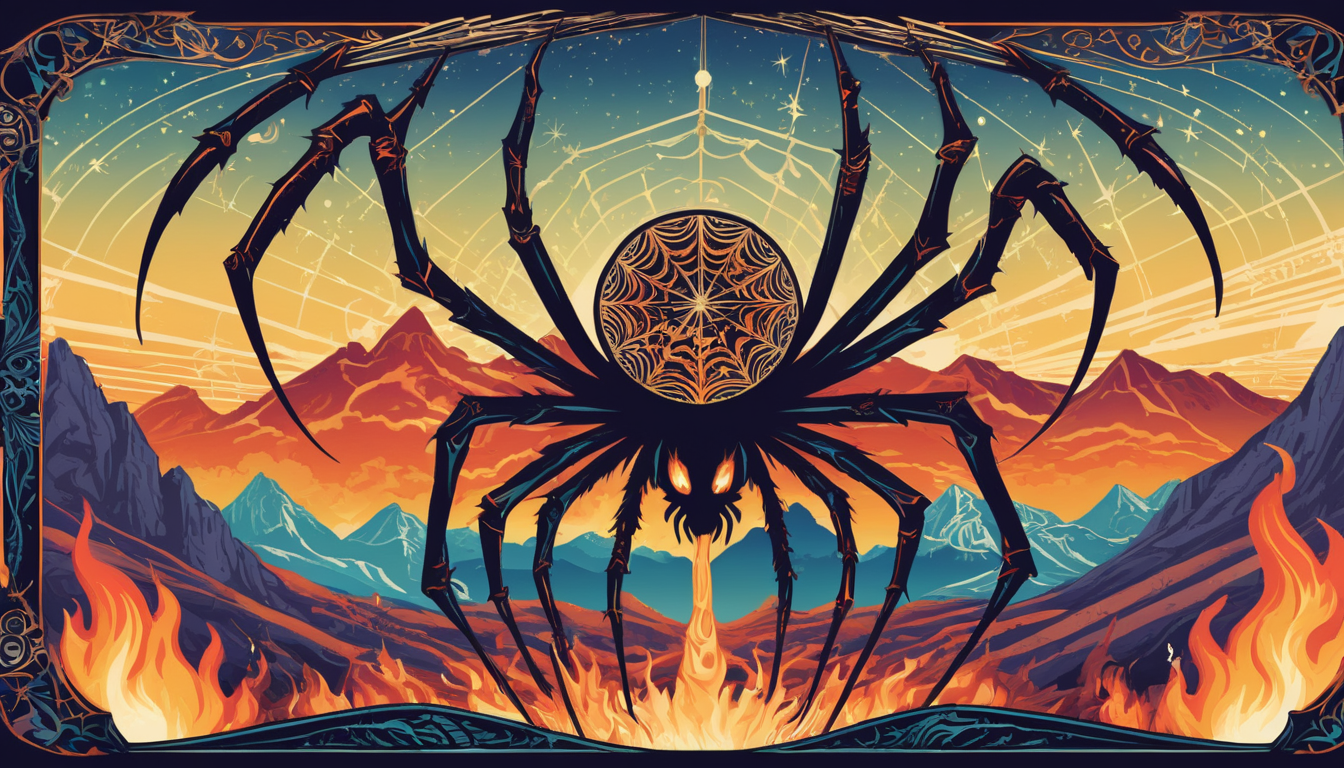
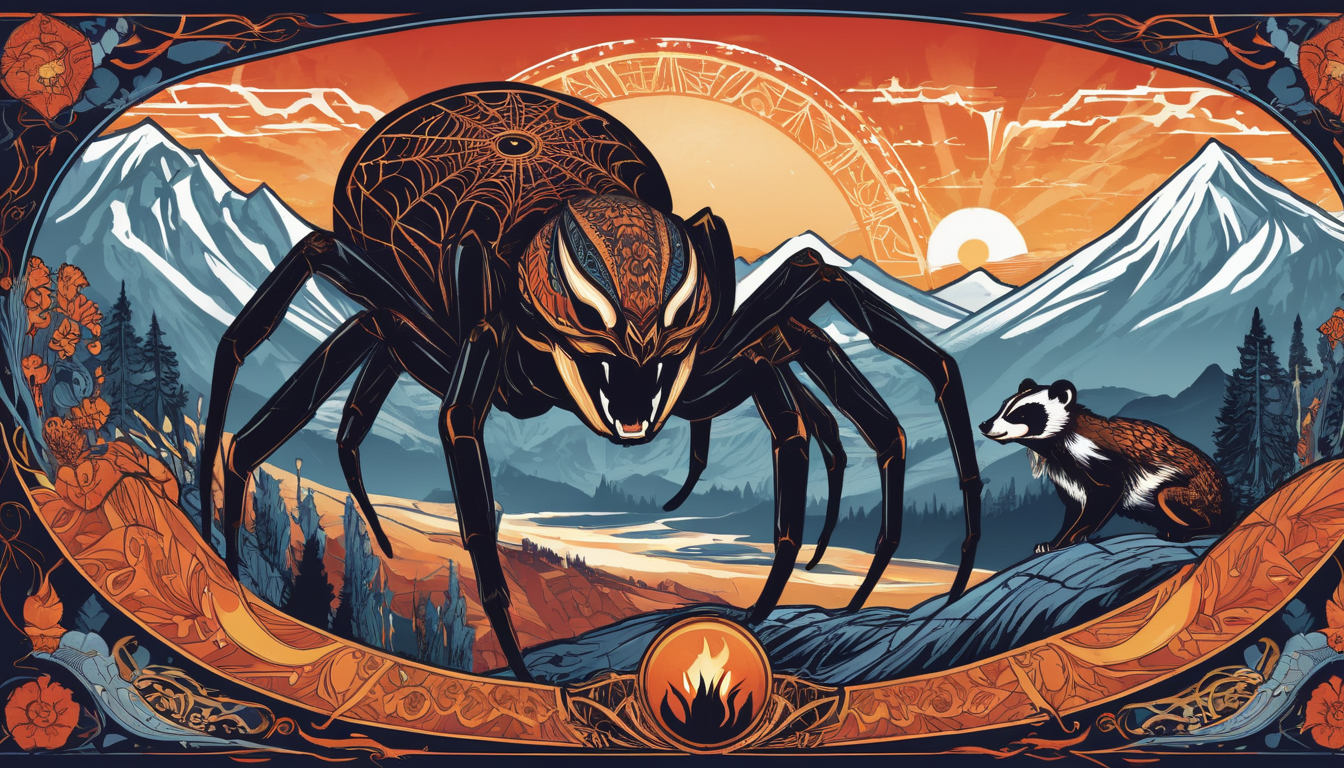
The Falmad
This part of the Quereth is largely concerned with stories about the gods that the sculptors had created. There are many individual stories in this section, and there have been many documents found in recent years that include longer iterations of this section of the Quereth.
The Trials of Tratheaous
One of the more popular stories from the Falmad is the trials of Tratheaous. Tratheaous is the god of knowledge, known for his inquisitive and curious spirit, with an interest in everything. The trials consist of several linked stories:
- He wanted to know how big the earth was, so he walked around it’s circumference, through the ocean floor, across deserts, over mountains, and through the plains. Throughout he met various people, and creatures that helped and hindered him in different ways. Near the end he was distracted by a rare species of locust he had never seen before, and lost count, so he had to retread everything again.
- He wanted to know the limits of life, and which animal was the most resilient. So, he abducted various animals and people, then burned, froze, stabbed, dismantled, and disintegrated them to test at what points they died
- He wanted to know more about Tajan, since Jaerian loved him more than anyone else he went to him to get information. Jaerian did not trust him, especially not when he asked for Tajans location, so he told Tratheaous to leave. Late at night he stole the secrets from Jaerian, but he could not read them because they weren’t in a language spoken by anyone. Furious Jaerian punished him by taking his mouth, so that he couldn’t tell anyone what he had learned anymore
The Rathem
This is the longest of the three books by a significant margin. It is longer than the other two combined times two. The book contains stories of many revered figures in the faith, arguably the primary of which is Zarath. Zarath takes up the bulk of the text, being involved in various stories. Initially Zarath was a prophet has a miserable life, as an experiment Tratheaous gives him everything he wants, trying to discover the nature of happiness and Zarath is still miserable. He feels the pull of fire constantly, and decides to become a sculptor for a town. Through helping make monuments and statues he is able to understand the people of the town incredibly well. He still feels miserable so he begins to travel the world to understand his place in it. There are roughly 300 stories, the shortest of which is ~2 paragraphs, the longest is ~8 pages (~4,000 words).
After a long time travelling and helping people, he is still miserable, and one night his camp is hit by lightning, and a tree catches fire near him. He self immolates in the burning tree and finds peace in the fire, the fire reveals to him secrets of the universe. Zarath realizes eventually that he was a sculptor8 in his past life, he was killed, and re-formed in mount At’Rius into who he was now. This discovery is the basis of several traditions including the Flame Festival.
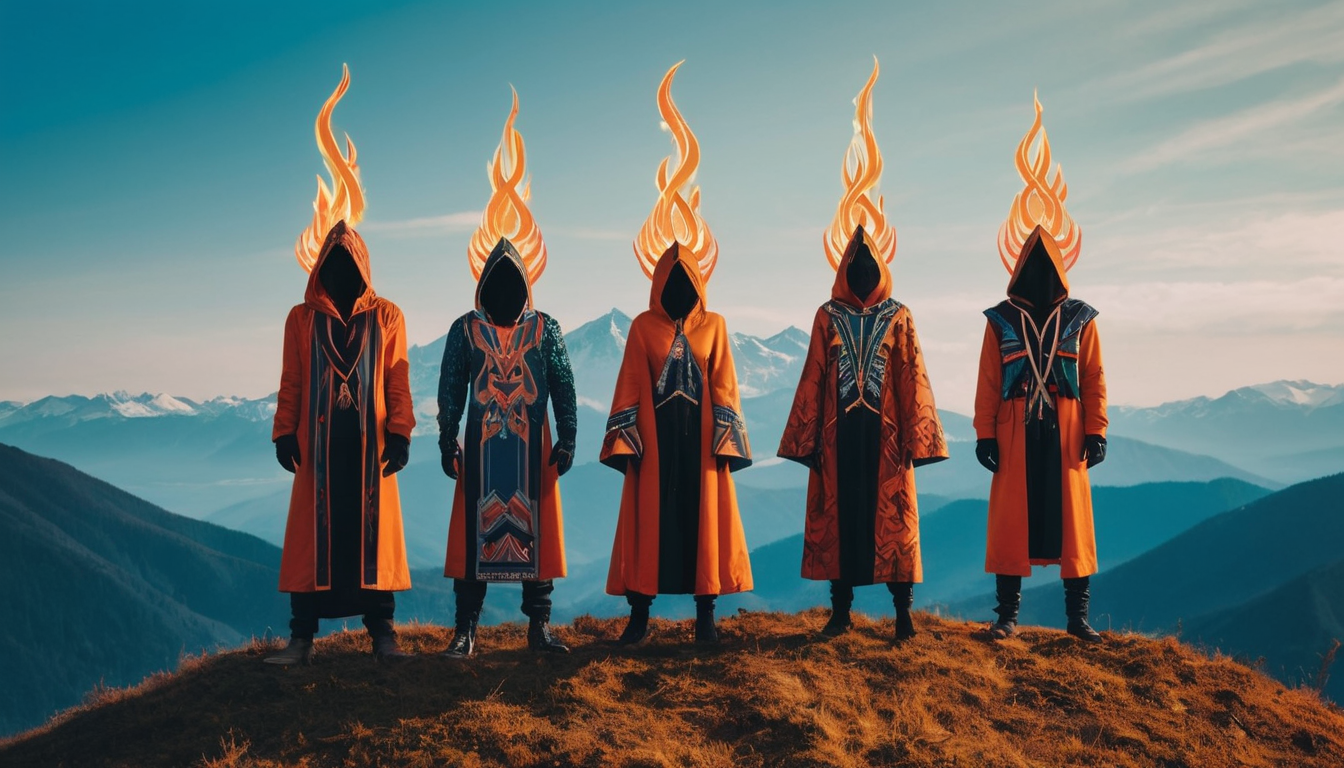
Following this he sought out the other sculptors, many of which had been since killed and reformed. He brought all of them together, and they began travelling to help people. Eventually a tyrant took over the kingdom they were in, and sentenced them to death. They all willingly walked into the fire to show people they should not be afraid of it. This particular type of immolation is called Aezreth where one ascends and becomes one with the flames. The new sculptors walk out of the flames9, and then the people begin to worship them instead of the king. Their new faces are never shown to the crowd, and they adorn masks before leaving and going in separate directions.
The rest of The Rathem is mostly stories about the sculptors, or people who are implied to be the sculptors helping people in various ways, whether is be for their army, creative endeavors, or just normal family issues. Most of these parables have different messages depending on how you interpret them, and the readings differ dramatically from priest to priest. The bulk of communal reading ceremonies content tends to come from The Ratham.
Killmaei
The Killmaei is the section of The Rathem that discusses the afterlife, though for all but the Tyreth this section is superseded by the Afterlife Beliefs in the Uertes. The Killmaei is a realm where the dead go and are given a choice. Each soul has been given a number of coins at their creation, these coins will allow them to reincarnate as themselves again, or they can enter the flames and engage in Aezreth. If they have no coins left they are considered unworthy, and instead their soul is burned in the pyre and they are forced to serve as a star, watching over other planets until the end of time.
Much of the text of The Rathem is very judgmental in a literal sense. People are constantly being judged and “reformed” in various portions, with the Killmaei this focus on reformation is present. There was a predominant belief that giving people the tools of their own destruction was an important aspect to being able to judge. In this case the coins are chosen to be spent, with the consequences known, yet some people will still care so much about their “earthly” lives that they would sacrifice their souls to keep them. The decision of the last reincarnation to spend the last coin is considered the actual choice that earns oneself their destruction and reformation.
The Uerties
The book of Uerties is a book wholly written by Uerties, and is considered to be his prophetic text. The book is highly contentious among the different denominations, and some outright reject it, and Uerties more broadly (only followed fully by Av’Brak and Sal’em). The book is biographical in nature, and is his telling of the chronicles of his life. Structurally it is similar to The Rathem in that it is mostly small parables, some of which have historical backing, and others which do not. Historically the development of the book has been credited as a large contributing factor to the Uertian split. Compared to the prior books there are several major revisions:
- The book changes the afterlife beliefs laid out in Killmaei to the beliefs laid out below involving Heit and Holi
- There is an implication in several stories that Uerties had actually met Zarath, and was related to him, though many read these passages as allegorical, and that they met, and were related spiritually, not physically
- Within the lifetime of Uerties son Dahrem, the book was updated to include historical significance for why the apostrophizing of names during Engulfing was important, though this historical significance is heavily challenged to this day
- Many of the names of places were changed in the book, later translations of the other books now use these names, however older translations used the original names
- Many of the actions taken by Zarath are also claimed to have been done by Uerties including stories of wars being resolved diplomatically, feats of strength, and discoveries made
Afterlife Beliefs
There are denominational differences, but the most common Zarathem afterlife beliefs revolve around worthiness. Each person is taken to a “waiting room” (Pras). Following this waiting room you are taken to a giant gold disc (Hur), the disc decides if you were “made properly”. If you aren’t “made properly” you’re dropped into Heit, where you are burned alive and become part of the river of Heit, where new souls are crafted from the remnants of old souls. If you are “made properly” then you enter Holi, where you become responsible for creating new life along with everyone else who was worthy of entrance.
Being “made properly” consists of various attributes, but most commonly it’s having lived a life that extols particular virtues laid out in The Uerties:
- Kindness for those you love
- Openness to people in your community
- Reverence for King and Country
- Mercy when punishing the good10
- Obedience to ones parents and superiors
- Deference to the better equipped11
- Temperance in all things
- An aversion to the weaknesses12
Comparison to the Killmaei
The belief is similar to the one outlined in The Killmaei, but with some changes. Instead of coins, the decision about whether you’re worthy is made “across your life”, which implies you must act honorably throughout life, not just after your death. Many of the proponents of this view say that this is a much more fair and just system compared to the Killmaei where “one moment” of weakness can be what sums up your whole life. However, the definition of how you must live is prescribed in The Uerties, leading many critics to claim this re-writing of beliefs was a power grab to convince people to act how Uerties wanted. One of the key pieces of evidence cited for this is that of the virtues arguably 5/8 are reinforcing the authority of who is in charge of someone, which at the time was also often Uerties.
Denominations
There are many denominations of Zarathem that are practiced, however there are a handful of primary denominations that house the majority of followers. There are also sub-denominations, and differences of opinions within individual denominations. Some of these denominations have major differences with one another in how they view the texts, and particularly the modifications Uerties made.
Av’Brak
The Av’Brak are the most popular denomination, making up nearly 2/3 of followers. The Dynar is the spiritual leader, who is also the monarch of Dah’Rem. They are followers of Uerties and believe he is the paramount prophet, who gives the correct interpretation of the Zarathem Faith. As such they believe in all three of The Books, however they defer any contradictions to The Uerties and whatever it says about the topic, considering it the penultimate book. On top of just the regular beliefs specified in The Books, there is also a focus on preparing for the end of the world. In particular, they believe that passion will help save them as it did with Yaelrion.
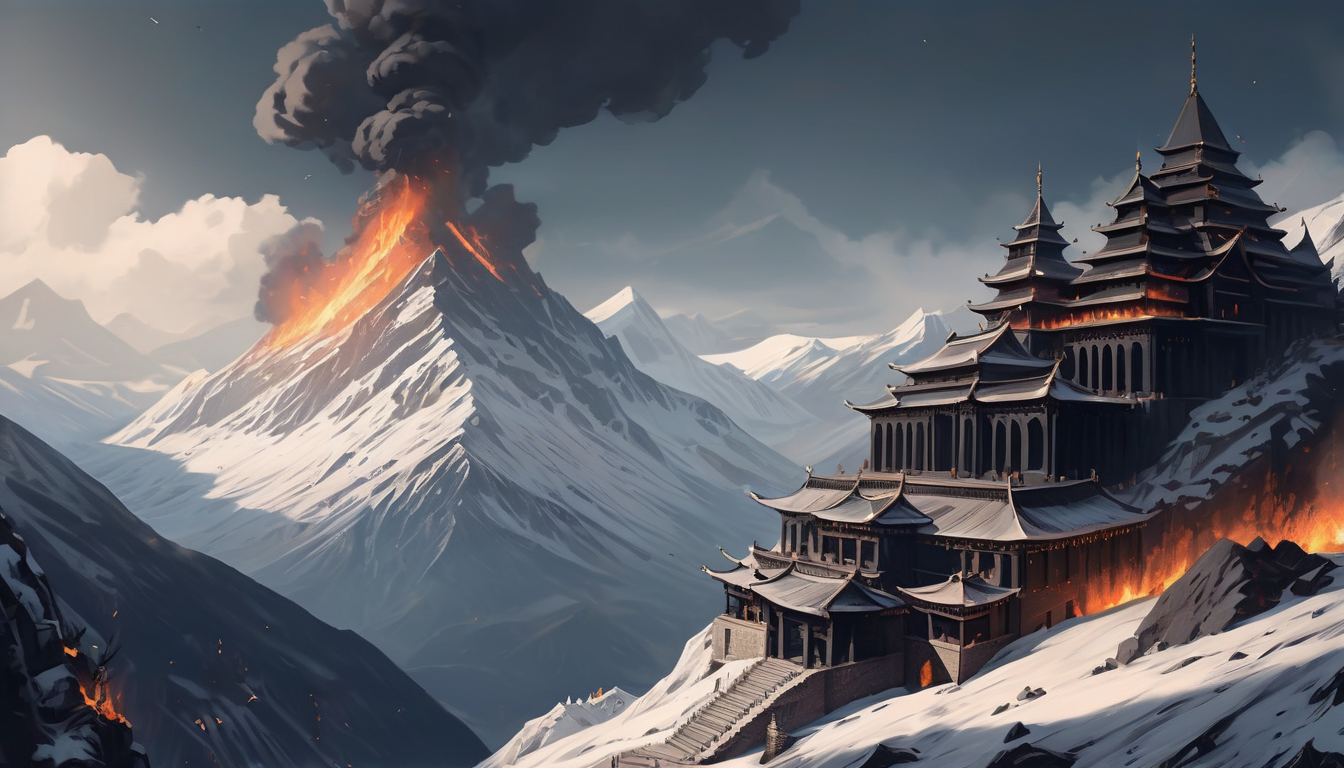 *An artist rendition of the Paracus monastery with mount At’Rius in the background
*An artist rendition of the Paracus monastery with mount At’Rius in the background
In order to train their passion, they have various traditions to fight off the cold. Many of their most sacred monasteries are high in the mountains. Monks and priests frequently practice sleeping outside, going for walks in storms, and sitting naked outdoors in the monasteries. They believe the fortitude to manage pain, and overcoming the cold is the way to a spiritual form of Aezreth.
 *An artist rendition of the Flame Festival, conducted at the top of mount At’Rius each year
*An artist rendition of the Flame Festival, conducted at the top of mount At’Rius each year
Differences in Flame Festival
Many denominations interpret and practice the flame festival differently. The Av’Brak have a ceremony in which the heads of each monastery make a yearly pilgrimage to mount At’Rius. They believe that Tajan left some of the “cinders of creation” in the mountain, so torches are lit, then carried rom mount At’Rius to the Paracus monastery where a ritual is conducted, and the monks robes are lit on fire.
Sal’em
The Sal’em are the second largest denomination of Zarathem, accounting for roughly %9 of followers. They are also followers of Uerties, they believe he was a prophet, but that he wasn’t the most important prophet. They revere Zarath, Uerties, and other prophets relatively equally. They believe primarily that giving oneself to the world is a form of spiritual Aezreth, as such many of their monks and priests are highly educated seeing it as part of their faith. Due to this many of their monasteries are in remote parts of the world, primarily in jungles (such as Bar’eth), where they spend a lot of time categorizing and researching the animals and plants.
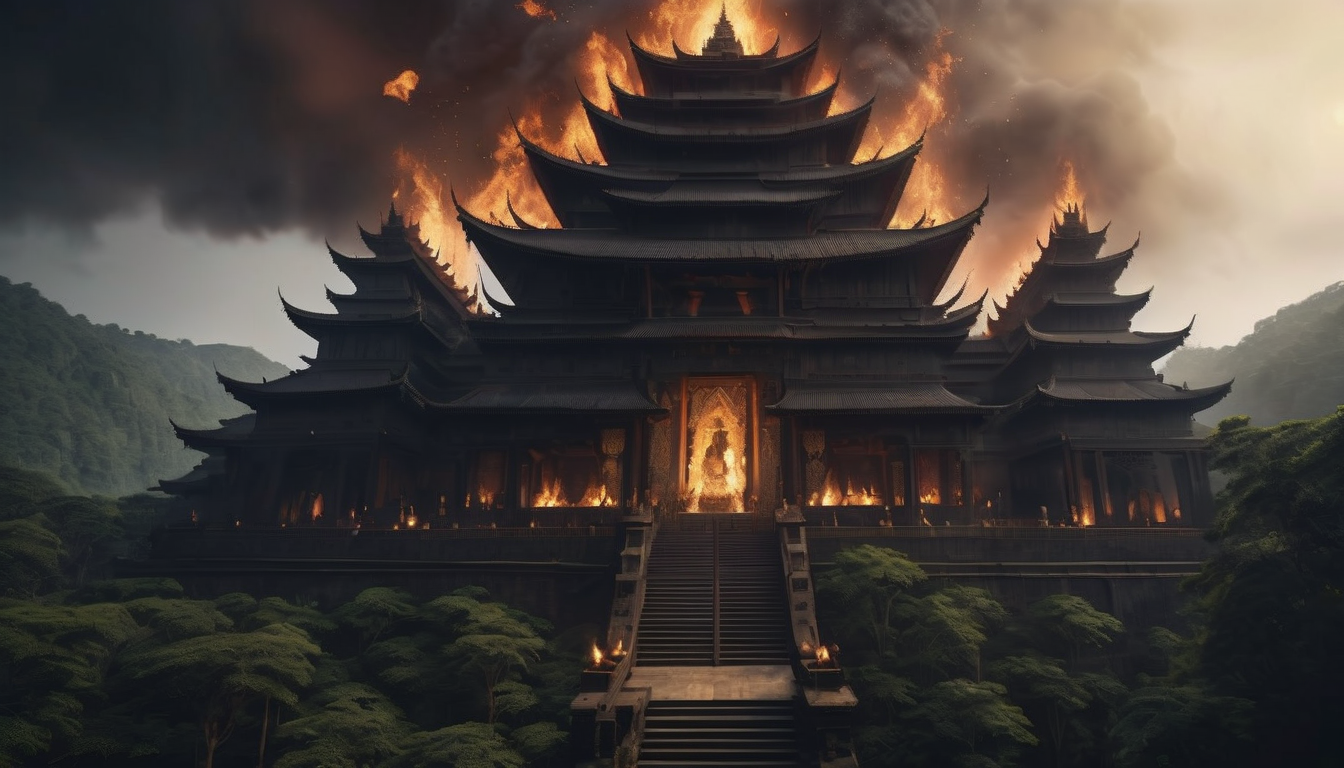 *Painting of the Sal’em monastery in Bar’eth
*Painting of the Sal’em monastery in Bar’eth
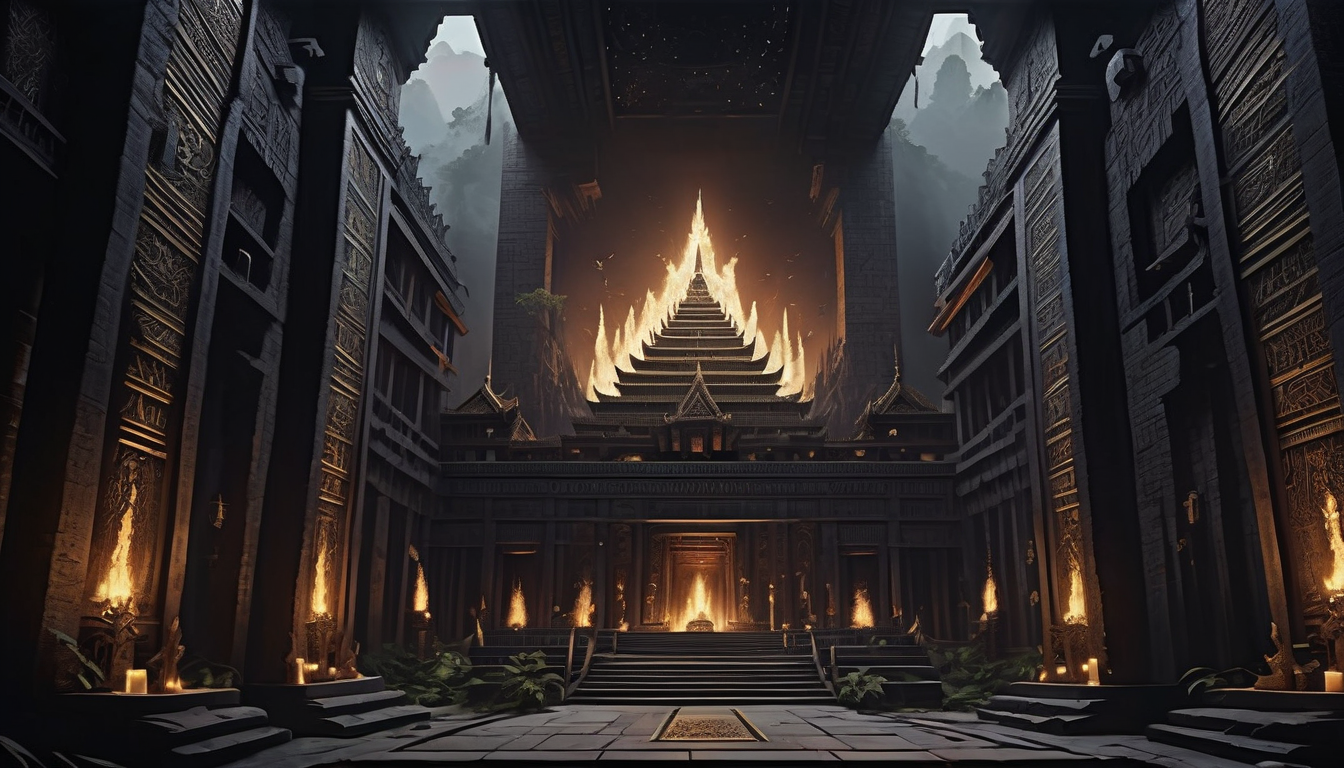 *Painting of the entrance inside of the Sal’em monastery in Bar’eth
*Painting of the entrance inside of the Sal’em monastery in Bar’eth
A common practice for Sal’em monasteries is to have open pyres in the trees. They have these fires, and cover the main building in Karlin, a flame retardant that keeps fire from spreading. This is also the chemical used during other denominations Flame Festivals to keep the participants from burning. For the Sal’em they often also use Flaryn, which is an accelerant that keeps the underlying surface from being burned, while allowing the flame to continue. This is because the Flayrn vaporizes into a flammable gas from a solid when heat is applied, allowing the fire to keep burning.
Flame Festival Practices
During the Flame Festival the Sal’em burn effigies of the sculptors instead of having monks participate like the Av’Brak. For the Sal’em, people participating directly are emulating new sculptors as a normal person, which is tantamount to blasphemy. They believe in a strict hierarchy of beings that should be followed, and humans as lesser beings acting as if they are sculptors is disrespectful to the sculptors, and creation itself.
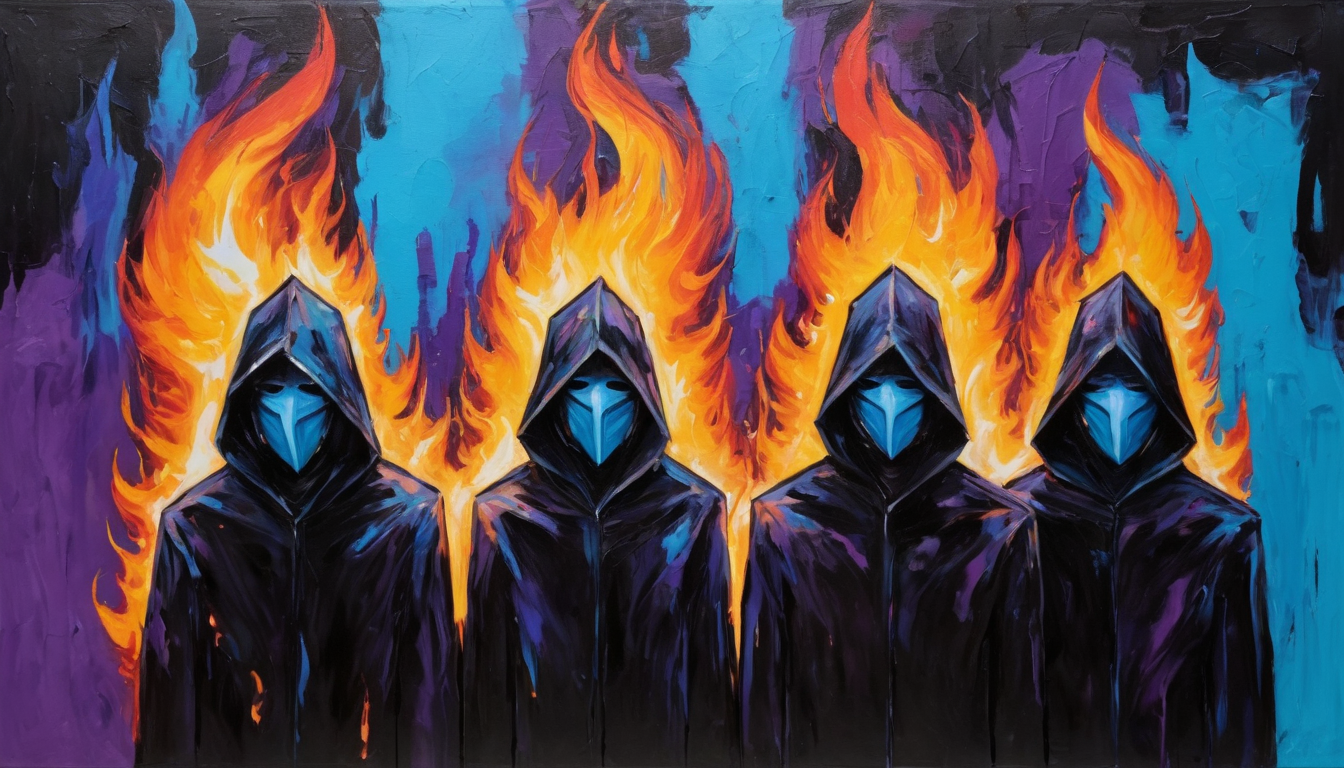 *Painting of the Sal’em flame festival
*Painting of the Sal’em flame festival
Tyreth
The Tyreth are the third largest denomination, estimates place them at %4 of the population of followers, however these numbers are likely inaccurate due to a lack of census data. They are one of the main groups that broke off during the Uertian split, and as such they only follow the original texts of The Quereth and The Rathem. The Tyreth are very difficult to get information about, primarily information comes from apostates who leave the faith.
Seclusion
“To grow the passion in your soul, you must first understand your soul. That understanding comes from being with oneself long enough to know themselves.”
- Zarath, The Rathem
As followers of the Killmaei, they believe that seclusion is the way to achieving a form of enlightenment similar to Aezreth. They believe that seclusion helps you to not get attached to the outside world, making you less likely to spend your coins after death. Due to this the Tyreth live in underground monasteries that were built to ensure seclusion from the outside world. This has lead to much speculation about their practices and behaviors. In general we know they are very anti-technology, and rely primarily on hand tools, and primitive technologies to get by.
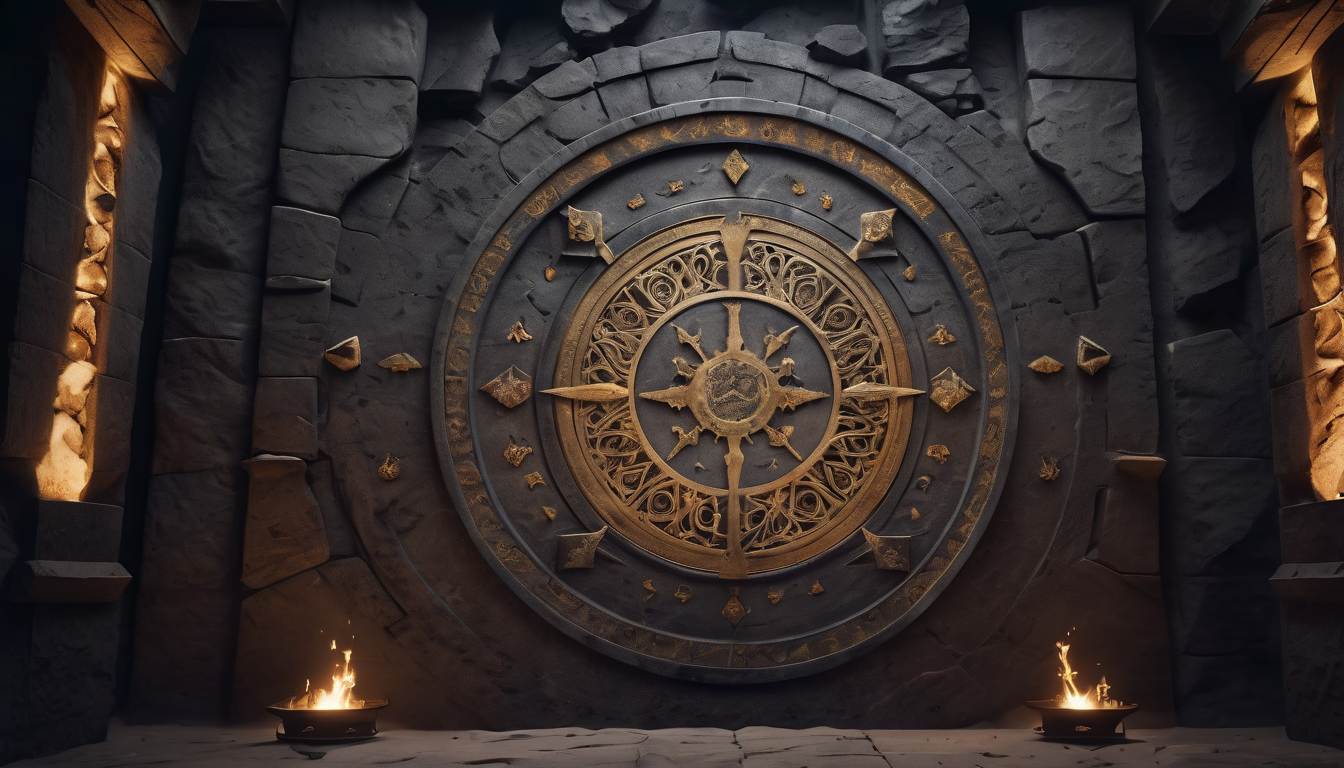 *The entrance to the Tyreth monastery in Heiyul
*The entrance to the Tyreth monastery in Heiyul
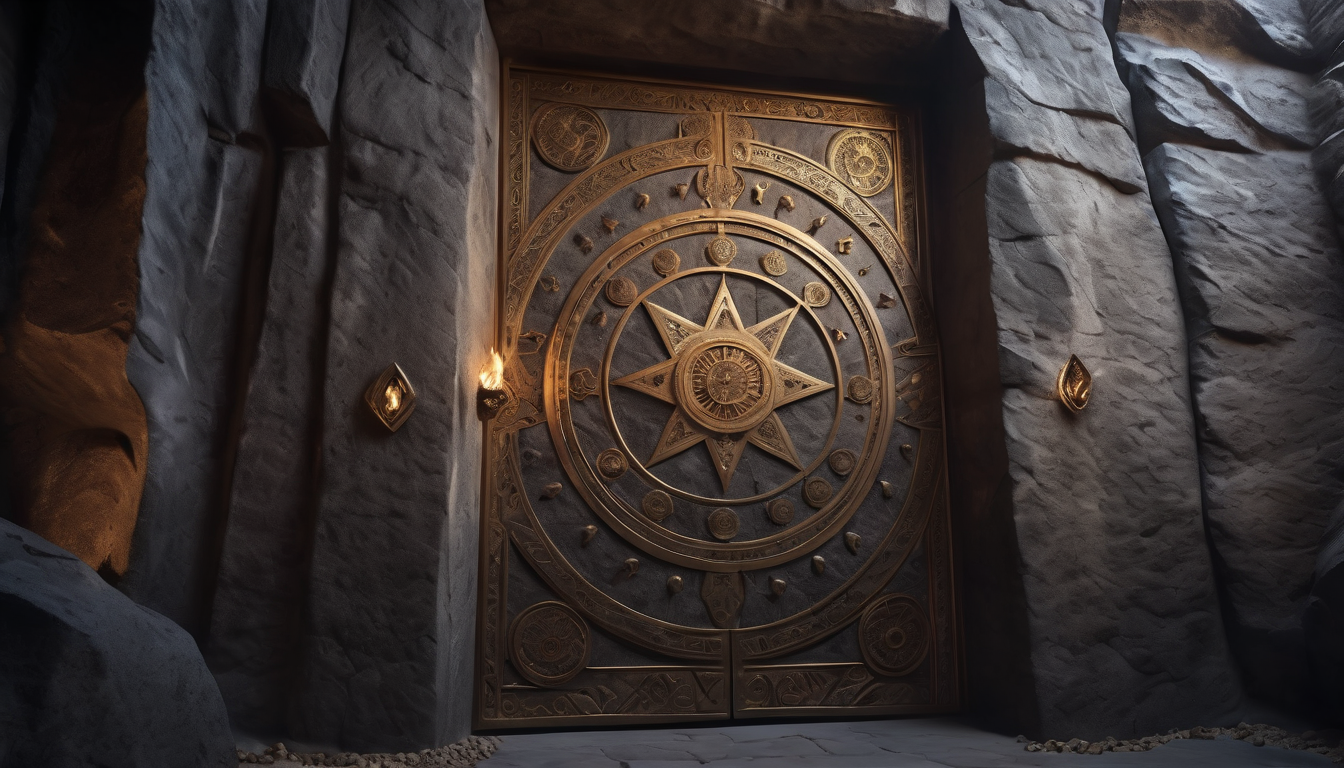 *The entrance to the Tyreth monastery in Gur’men
*The entrance to the Tyreth monastery in Gur’men
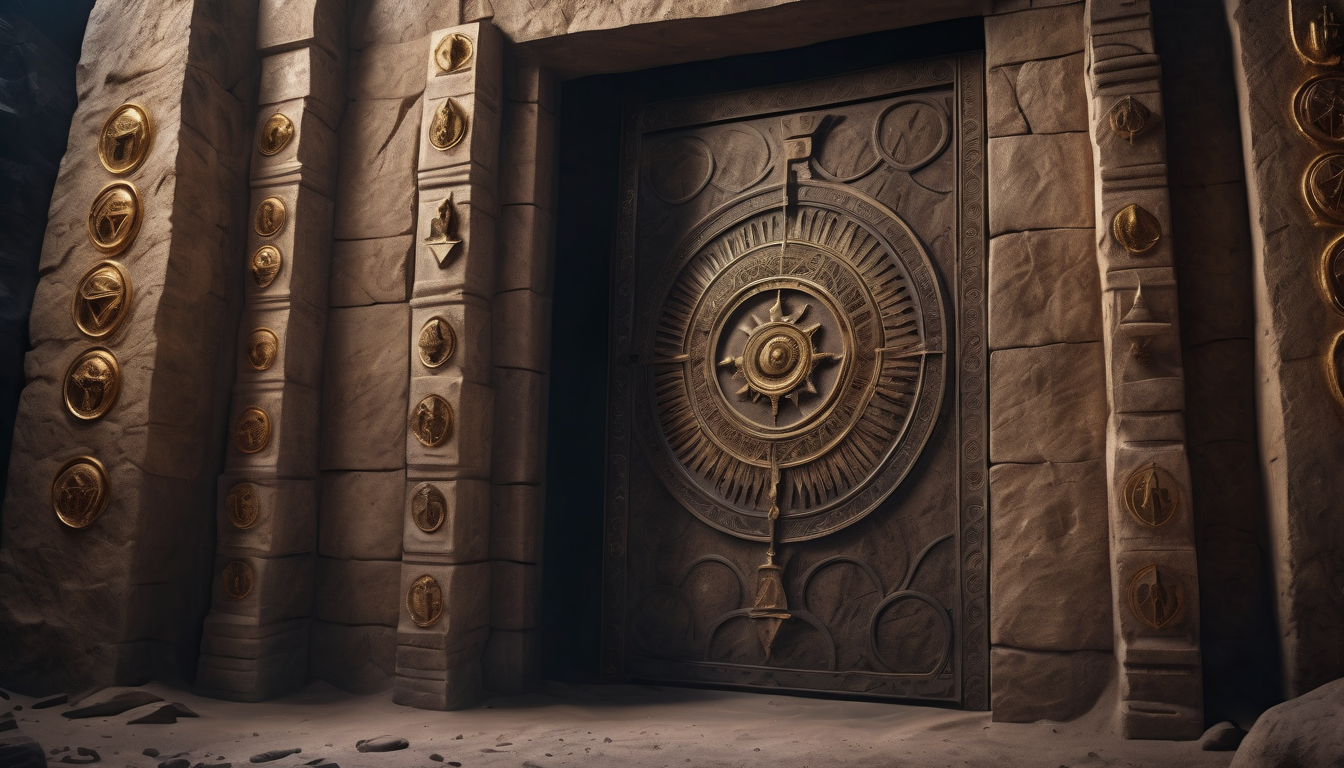 *The entrance to the Tyreth monastery in Dalopania
*The entrance to the Tyreth monastery in Dalopania
This seclusion provided many advantages, including during the expansion of the Dah’Rem empire, they were able to stave off most attacks because of the inability to get into their encampments. Most of the monasteries had a large stone door to block off the entrance, and they would often leave a small hole for Flayrn to be poured into the entrance, which could then be lit to burn the soldiers alive. The largest casualties of the expansion came from the attempts to break into the Tyreth monasteries.
Depiction in Media
Much of the speculation surrounding the Tyreth has lead to them being included in a large portion of fantasy media. There are stories of their monasteries being filled with various ancient crystals, powders, and artifacts that bring people power. Often these depictions have lead to expeditions from explorers in search of treasure who harass the local population. There has been no evidence presented by anyone that the cave monasteries possess any of these treasures.
Satellite imaging suggests that the monasteries themselves are relatively minimalistic, and consist primarily of simple stone and wood structures, with crops and animals being kept in areas that have the most sunlight. Much of the building, and practices seem to be similar to the same practices that were happening in Dah’Rem prior to the industrial revolution.
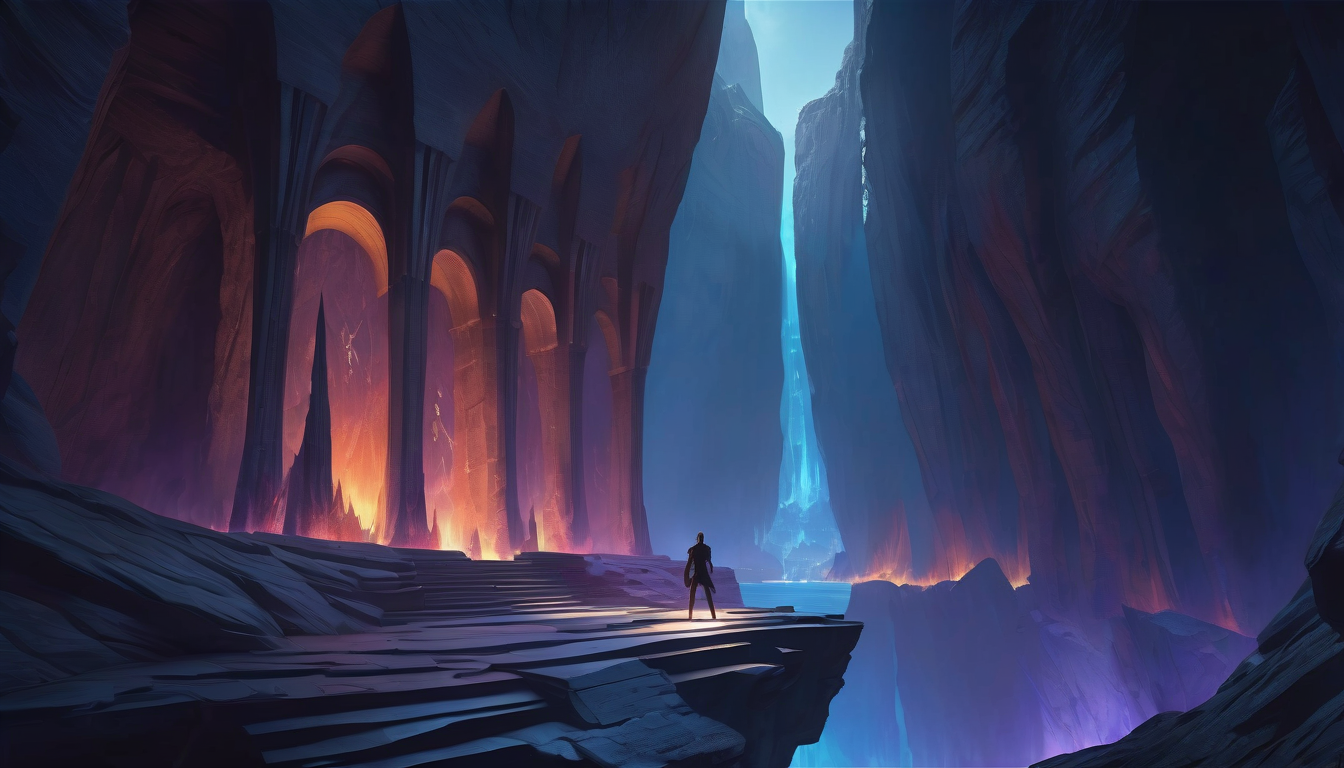 *Depiction of a Tyreth monastery in “The heroes journey”, a fantasy experience by ExperiNow
*Depiction of a Tyreth monastery in “The heroes journey”, a fantasy experience by ExperiNow
 *Depiction of a Tyreth monastery in “Darkest fantasy”, a fantasy Movie by Oblong Entertainment
*Depiction of a Tyreth monastery in “Darkest fantasy”, a fantasy Movie by Oblong Entertainment
 *Depiction of a Tyreth monastery in “A knights last love”, a romance novel by Katria Fet’mayin
*Depiction of a Tyreth monastery in “A knights last love”, a romance novel by Katria Fet’mayin
Uerties
Uerties (uw-er-it-ease) was a blacksmith who lived with his wife (Aeimila) and son (Dahrem), primarily in and around Av’Brak in Dah’Rem. Around the age of 30 he had a near death experience where his house “was engulfed in flames”, and he walked out unscathed. Unfortunately his wife died during this fire. He claims that he took this as a sign of his sculptor heritage. His father was a ruler of many of cities near Av’Brak. With access to such a wide audience through his father Uerties began to perform “miracles”, and feats of strength cultivating the belief that passion was the key to overcoming adversity (as Yaelrion did).
Great Meditation
In order to demonstrate his belief in the strength of passion (an homage to Yaelrion), Uerties is said to have meditated at the spot of the Paracus monastery on top of mount Farheid (across from mount At’Rius). This meditation lasted several days to weeks (depending on who’s account you trust), and was supposedly done unaided by blankets or fire. Uerties claims that his “passion is enough to keep [him] warm”.
 *An artist rendition of the Paracus monastery with mount At’Rius in the background
*An artist rendition of the Paracus monastery with mount At’Rius in the background
Flame Festival
The flame festival is an integral tradition in the Zarathem faith. In it’s original practicing the flame festival begins with “the plunge”, which is where several important figures join the current Dynar, and are lit on fire. This tradition harkens back to stories told of the Sculptors, wherein upon death they wore brightly colored robes, and were engulfed in fires to be reborn. A more contemporary addition to this tradition is a march, or parade through the streets while wearing blue masks that are meant to symbolize the bright blue worn by the sculptors in the stories.
Following the meditation at Paracus, Uerties is supposedly the first to have done “the plunge”, which is traditionally the opening ceremony event of the Flame Festival. However it’s claimed that this was done without the traditional Karlin robes that keep the wearer from harm, and instead that he was simply standing in the flames.
Engulfing
Engulfing is a ceremony that takes place between 3-26 months for most children (though it can be done at any age), and is meant to be an induction to the faith. The participant is taken, and placed inside a Farcaid13, essentially being swaddled in it. They are then placed into a Dradimir14, the participant is left inside for up to a minute before they are removed and considered to now officially be part of the faith.
In modern iterations of engulfing the participant is given their “True Name”. For most names this is a simple apostrophizing of their existing name. This practice began when during the last engulfing ceremony Uerties participated in He briefly paused15 between the name. This lead to the name being written down as Dah’Rem instead of Dahrem as it was before. The justification for this is that a person cannot be defined as simply one thing, and the apostrophizing seeks to capture part of the complexity of the human condition.
Critiques
Much of the historical accounting of Uerties, and his work are heavily disputed. Some main highlights are:
- The claim that he is the son of a Sculptor is heavily disputed, and some have gone so far as to argue that the lineage he claims to be from was added as he was unifying the faith to give him a more extraordinary background
- The claim that he is the first to have done “the plunge”, and that he did not wear the robes are both heavily contested. There are many artist depictions of Uerties in white robes while being on fire, and it’s thought this is likely how it actually happened.
- Much of his work is claimed to have been taken from other groups, particularly that which is in The Uerties.
- The concept of the Flame Festival is likely adapted from an earlier group in Dah’Rem referred to in the literature as the Azure Flames
- Various passages of The Quereth and The Rathem seem to be modified from versions that were kept in other nations, such as the sage scripts16
- The modern versions of Engulfing that include the apostrophised names (i.e. DahRem ⇒ Dah’Rem), are claimed to have been done intentionally, however more modern research on the bones of Uerties seems to indicate a lung infection was present that caused the differentiation
- Many stories from The Uerties have no historical backing, and in some cases defy historical knowledge
- His claim that he freed a group of Aeytr soldiers demonstrating his mercy is oppositional to the historical consensus that the Aeytr were primarily decentralized, and intentionally avoided things like armies until their later repression (20 years from when this story supposedly took place) forced them to centralize
- Several stories of diplomatic victories, feats of strength, and scientific discovery are almost direct plagiarisms of Zarath, and other prophets actions in The Rathem
Footnotes
-
The “end” referenced here is the beginning of the universe, it’s believed that this universe was formed from “the matter” of another universe, which was then “poured” into this one, and formed into the world we know now ↩
-
The Tyreth believe there were 4 sculptors not 5, the fifth is very contentious because it’s claimed Uerties is directly related to them, yet they don’t appear in any works prior to him beginning writing ↩
-
The word here doesn’t quite mean hatred, but it’s close. It means something like critique, but to the degree you need to destroy it ↩
-
It’s important to note that Cueile is the goddess of fertility, which indicates she was actually beyond human, however her children were human. Only sculptors could create Gods ↩
-
While a contentions line, it seems to be the case that this pattern of ownership from one “class” to another was commonplace throughout the books the gods were “in charge” of humans, and so to humans were “in charge” of animals ↩
-
durmec is the name given to this night of Jaerian burning the world ↩
-
They both supposedly fled underground to heal, and prepare for their final conflict, which would come when Tajan comes back to burn the planet away ↩
-
The Tyreth do not believe this. They believe that he was instead given visions of a sculptors life, but that Zarath himself was not a sculptor. This distinction is important because Uerties claims to be related to Zarath ↩
-
For the Tyreth this is where Zarath dies, his sacrifice is why they revere him, since for him it really is death, while the rest of the sculptors are reborn. His death marks a sort of martyrdom that is popular in the movement ↩
-
The “good” in this case are those who mostly adhere to the same virtues, and have managed to go astray this one (or few) times ↩
-
It’s ambiguous what “better equipped” means in this context, whether it be better educated, wiser, stronger, it’s open to interpretation ↩
-
The “weaknesses” include jealousy, hatred, laziness, greed, irreverence, and fear ↩
-
Bright orange and red cloth ↩
-
Essentially a box with blackout paint on the inside ↩
-
Some claim instead he actually coughed ↩
-
The sage scripts were copies of The Quereth and The Rathem that were given to a king in Shekland before the unification of the texts by Uerties ↩